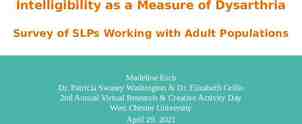Unit 3 CHAPTER 11: UNDERSTANDING RANDOMNESS (SIMULATIONS) A P S TAT
18 Slides113.57 KB
Unit 3 CHAPTER 11: UNDERSTANDING RANDOMNESS (SIMULATIONS) A P S TAT I S T I C S
WHY BE RANDOM? What is it about chance outcomes being random that makes random selection seem fair? Two things: Nobody can guess the outcome before it happens. When we want things to be fair, usually some underlying set of outcomes will be equally likely (although in many games some combinations of outcomes are more likely than others).
WHY BE RANDOM? (CONT.) Example: Pick “heads” or “tails.” Flip a fair coin. Does the outcome match your choice? Did you know before flipping the coin whether or not it would match?
WHY BE RANDOM? (CONT.) Statisticians don’t think of randomness as the annoying tendency of things to be unpredictable or haphazard. Statisticians use randomness as a tool. But, truly random values are surprisingly hard to get
IT’S NOT EASY BEING RANDOM It’s surprisingly difficult to generate random values even when they’re equally likely. Computers have become a popular way to generate random numbers. Even though they often do much better than humans, computers can’t generate truly random numbers either. Since computers follow programs, the “random” numbers we get from computers are really pseudorandom. Fortunately, pseudorandom values are good enough for most purposes.
IT’S NOT EASY BEING RANDOM (CONT.) There are ways to generate random numbers so that they are both equally likely and truly random. The best ways we know to generate data that give a fair and accurate picture of the world rely on randomness, and the ways in which we draw conclusions from those data depend on the randomness, too.
PRACTICAL RANDOMNESS We need an imitation of a real process so we can manipulate and control it. In short, we are going to simulate reality. Suppose cereal manufacturers put famous athlete cards in boxes to boost sales. 20% of the boxes contain Tiger Woods, 30% David Beckham, and 50% Serena Williams. You want all 3 cards. How many boxes do you expect to buy to get the complete set?
A SIMULATION The sequence of events we want to investigate is called a trial. The basic building block of a simulation is called a component. Trials usually involve several components. In the card example, a component would be opening one cereal box. After the trial, we record what happened—our response variable. Trial’s outcome - # of components (boxes) in the sequence There are seven steps to a simulation
SIMULATION STEPS 1. Identify the component to be repeated. Opening a box of cereal 2. Explain how you will model the component’s outcome. Digits from 0 to 9 are equally likely to occur. 0 and 1 represent Woods (2 digits out of 10 20%). 2, 3, and 4 represent Beckham. 5, 6, 7, 8, and 9 represent Williams. 3. Explain how you will combine the components to model a trial. Pretend to open boxes until the collection is complete. Look at each random digit and indicate what picture it represents. 4. State clearly what the response variable is. We want to find the # of boxes it might take to get all 3 cards. 5. 6. Run several trials. Collect and summarize the results of all the trials. Report the shape, center, and spread 7. State your conclusion. In context!
JUST CHECKING – P. 260 The baseball World Series consists of up to 7 games. The first team to win 4 games wins the series. The first two are played at one team’s home ballpark, the next three are at the other team’s park, and the final two are played back at the first park. Records over the past century show that there is a home field advantage; the home team has about 55% chance of winning. Does the current system of alternating ballparks even out the home field advantage? How often will the team that begins at home win the series? Set up a simulation: 1. What is the component to be repeated?
JUST CHECKING – P. 260 (CONT.) 2. How will you model each component from equally likely random digits? 3. How will you model a trial by combining components? 4. What is the response variable? 5. How will you analyze the response variable?
GENERATING RANDOM NUMBERS ON CALCULATOR Math PRB 5:randInt( Examples of randInt simulations: randInt(0,1) randomly chooses a 0 or a 1 Commonly used for coin tosses randInt(1,6) Produces a random integer from 1 to 6 Commonly used for rolling a die randInt(1,6,2) Simulates rolling two dice. Hit enter to do several rolls in a row.
GENERATING RANDOM NUMBERS ON CALCULATOR (CONT.) Examples of randInt simulations (continued): randInt(0,9,5) Produces 5 random integers that might represent the pictures on the cereal box (0-9 had different meanings) randInt(0,56,3) Produces three random integers from 0 to 56. Also know how to use Appendix G in book when technology isn't available.
EXAMPLE Suppose a basketball player has an 80% free throw success rate. How can we use random numbers to simulate whether or not she makes a foul shot? How many shots might she be able to make in a row without missing? Describe the waiting time simulation of having her shoot free throws until she misses, counting the number of successes. Component: Trial: Response variable: Statistic:
EXAMPLE (CONT.) How would the trials change if her success rate was 72%?
WHAT CAN GO WRONG? Don’t overstate your case. Beware of confusing what really happens with what a simulation suggests might happen. Model outcome chances accurately. A common mistake in constructing a simulation is to adopt a strategy that may appear to produce the right kind of results. Run enough trials. Simulation is cheap and fairly easy to do.
RECAP How to harness the power of randomness. A simulation model can help us investigate a question when we can’t (or don’t want to) collect data, and a mathematical answer is hard to calculate. How to base our simulation on random values generated by a computer, generated by a randomizing device, or found on the Internet. Simulations can provide us with useful insights about the real world.
CHAPTER 11 ASSIGNMENTS: PP. 265 – 267 Day 1: # 1, 2, 4, 5, 7 – 10,13,15,17 Day 2: # 11, 12, 19, 25, 28, 29, 31 – 33, 37























